Our journey through the Franconia region began in the small town of Coburg, located in northeastern Bavaria. The city is known primarily for its numerous historic sights, the many palaces and castles in the surrounding area, the delicious Franconian specialties, and the beautiful historic old town. The region around Coburg has a distinctive beer culture and boasts several breweries. In Coburg’s restaurants and beer gardens, you can sample some typical Franconian beers.
While before our trip we primarily associated Bamberg, Nuremberg, Rothenburg ob der Tauber, or even Dinkelsbühl with the Franconian region, the former royal seat of Coburg has now definitely made its way into our minds. Coburg offers the perfect mix of art, culture, joie de vivre, and enjoyment. In the following article, we’ll reveal which Coburg sights and highlights you absolutely shouldn’t miss.
- Interesting facts about the city of Coburg
- Sights in Coburg
- Restaurants & Cafés
- Events in the fortress town
- Our hotel in Coburg
- Travel tips for Coburg
- Our Franconian podcast
Interesting facts about the city of Coburg
Coburg has just 41,000 inhabitants, making it one of Bavaria’s smaller cities. But as the saying goes, “Small but mighty.” And that’s exactly what Coburg is all about. Did you know that the former royal residence of Coburg was the birthplace of Prince Albert, the husband of Queen Victoria of England? At least we didn’t!
On the market square, you can still admire a statue of the prince, who was born in Rosenau Castle in 1819. Martin Luther also has a connection to the city, as he stayed at Coburg Fortress from April to October 1530.
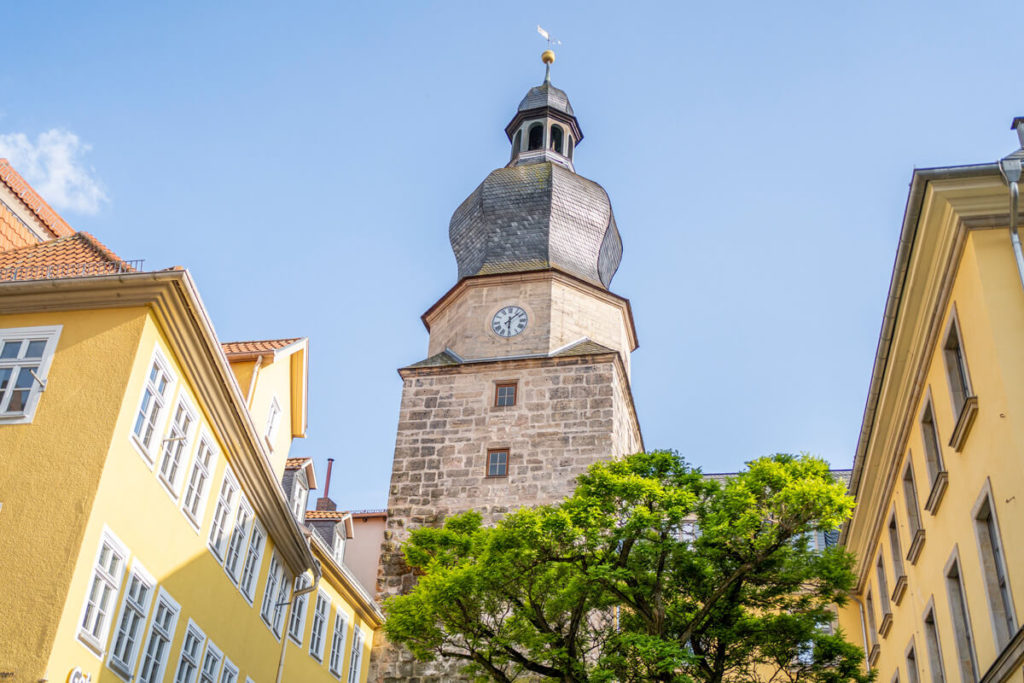
Several important European figures were born in Coburg or at least had a deeper connection with the city. But in addition to its title as a “European City,” Coburg could also be called a “Bridge City,” as the city has 23 bridges spanning the Itz River thanks to its numerous waterways.
And Coburg has another surprise in store: Every year in July, the largest samba festival outside of Brazil takes place, attracting over 150,000 visitors. From July 14th to 16th, 3,000 sambistas from ten nations will once again transform the ducal city into the “Franconian Rio.”
Sights in Coburg
The city of Coburg is known for its historic buildings and rich cultural heritage. On the map below, we’ve marked all the interesting highlights and sights in Coburg for you. There’s certainly a lot more to discover, but this overview should be helpful for you to get a first impression.
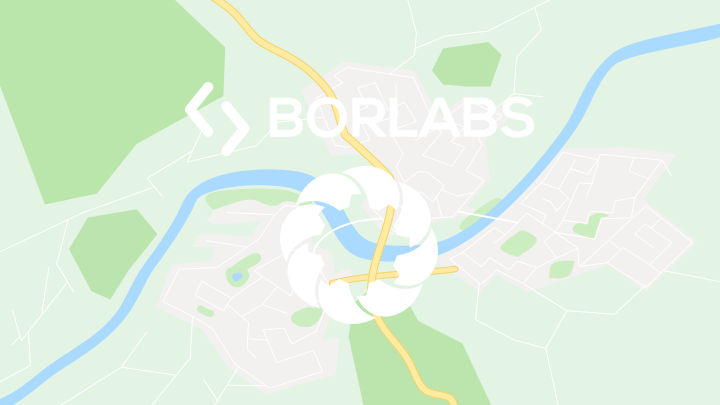
By loading the map, you accept Google’s privacy policy.
Learn more
Load map
1. Coburg Sights – The Historic Old Town
The list of sights in Coburg is long, but let’s start with the beautiful, historic old town, which is surrounded by the remains of an impressive and still well-preserved city wall.
Within the old town are numerous historic buildings, including the imposing Ehrenburg Castle, the Coburg State Theatre, the St. Moritz Church, the former Mint Master’s House (one of the oldest half-timbered houses in Germany), the historic Town Hall, and the impressive Town Hall.
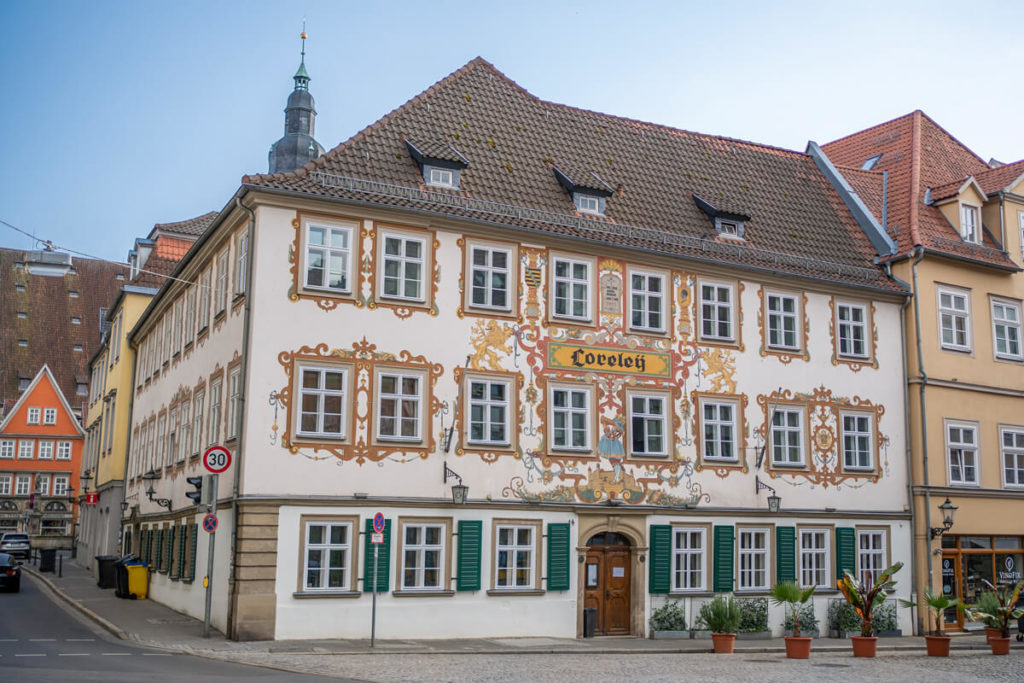
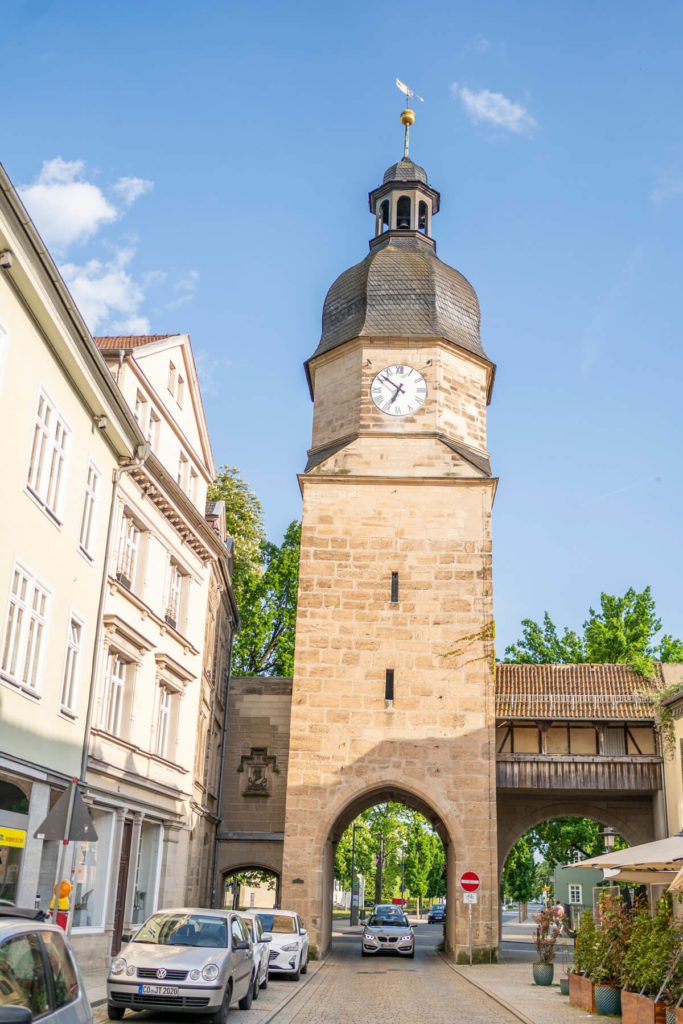
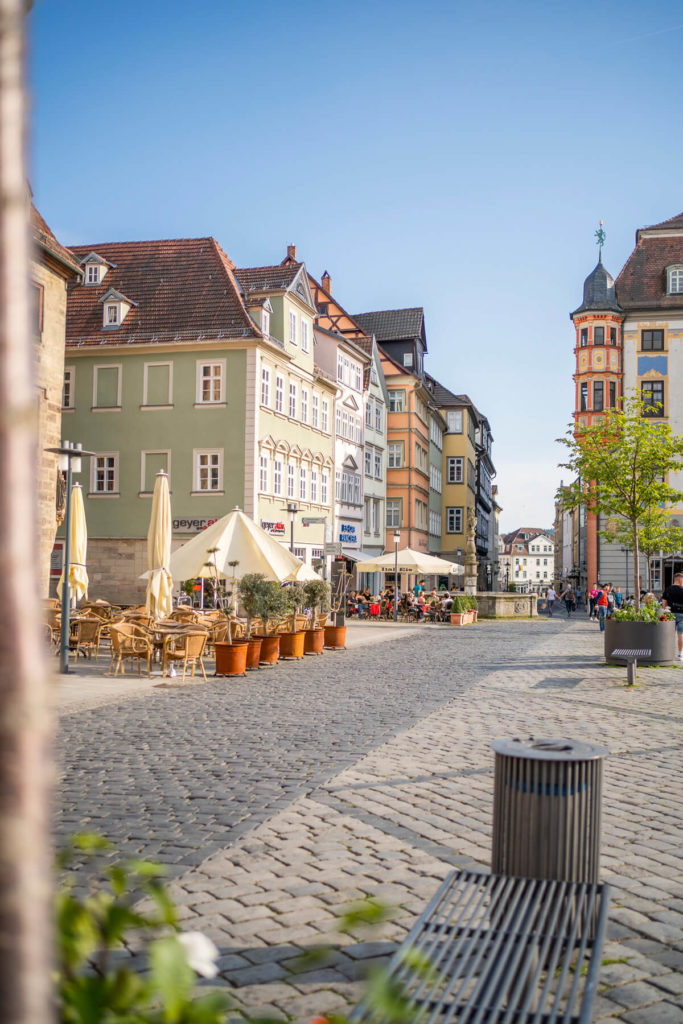
During our tour, we also discovered many picturesque squares, as well as charming streets and alleys that invite you to stroll and explore. Coburg’s Old Town boasts numerous restaurants, cafés, and beer gardens offering local specialties such as bratwurst and beer. We’ll tell you which restaurants we recommend a little further down.
2. The Central Market Square
The center of the beautiful city of Coburg is the Market Square, built in the 15th century and boasting several great sights. Here you’ll find, among other things, the pretty Renaissance Town Hall, the imposing Town Hall, the statue of Prince Albert, the Court Pharmacy, which is one of the oldest buildings on Coburg’s Market Square, and two historic fountains. Seven alleys lead from the Market Square into the Old Town, such as the Judengasse. the Spitalgasse or the Rosengasse.
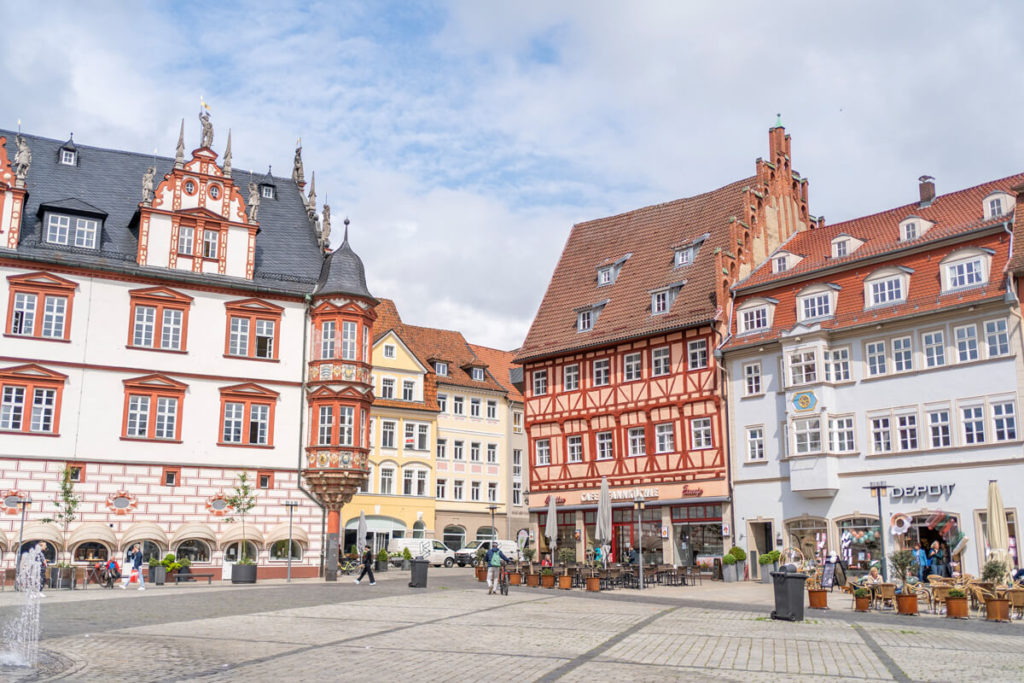
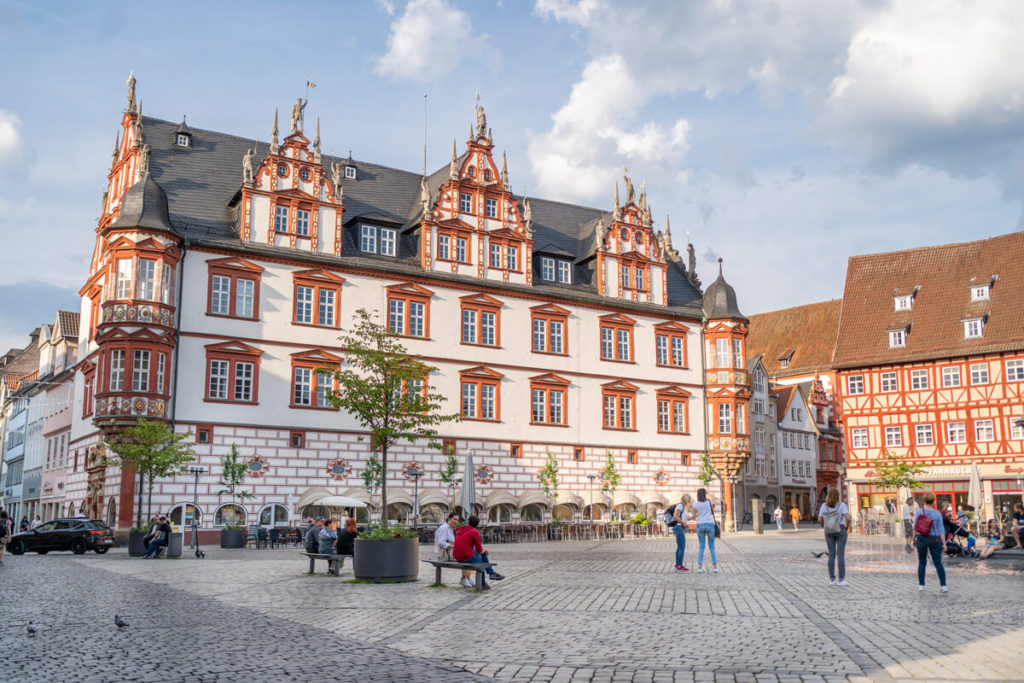
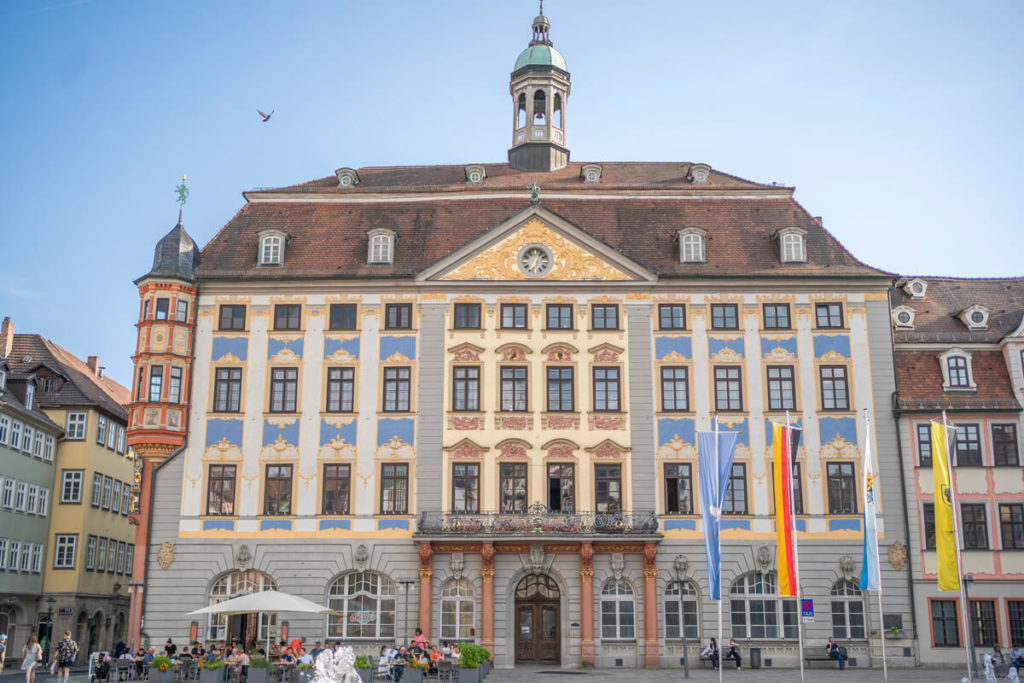
If you would like to learn about If you’re strolling through the weekly markets, you shouldn’t miss the colorful weekly market in Coburg. Here you’ll find fresh vegetables, delicatessen, meat, baked goods, flowers, and much more. In 2018, the market was even named Bavaria’s most beautiful marketplace by the trade magazine “GEO.” The market takes place every Wednesday and Saturday from 8 a.m. to approximately 1 p.m..
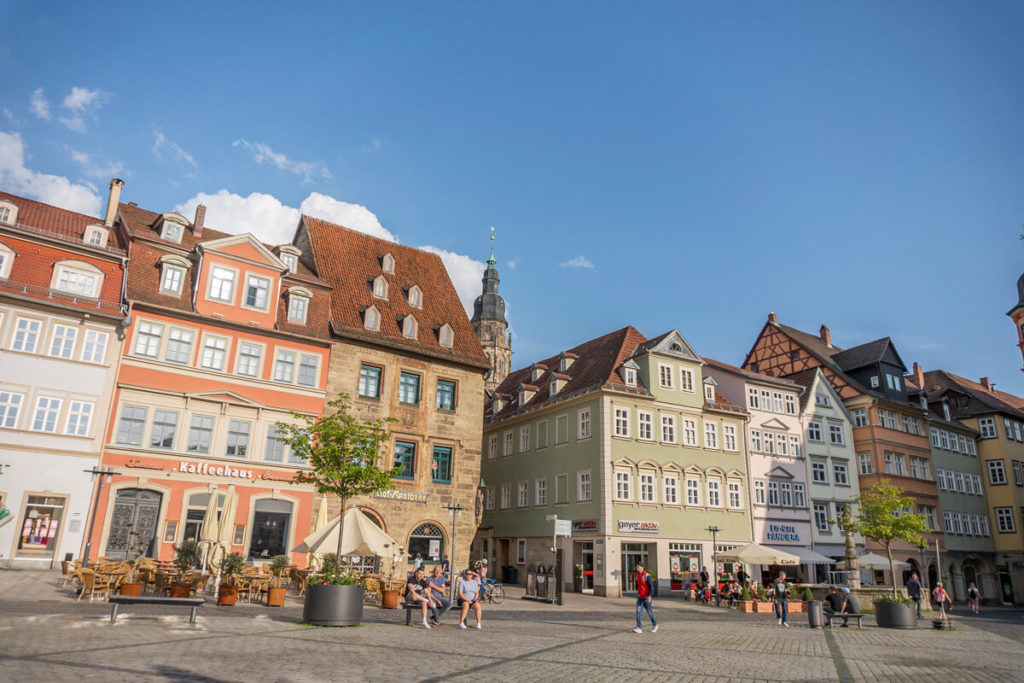

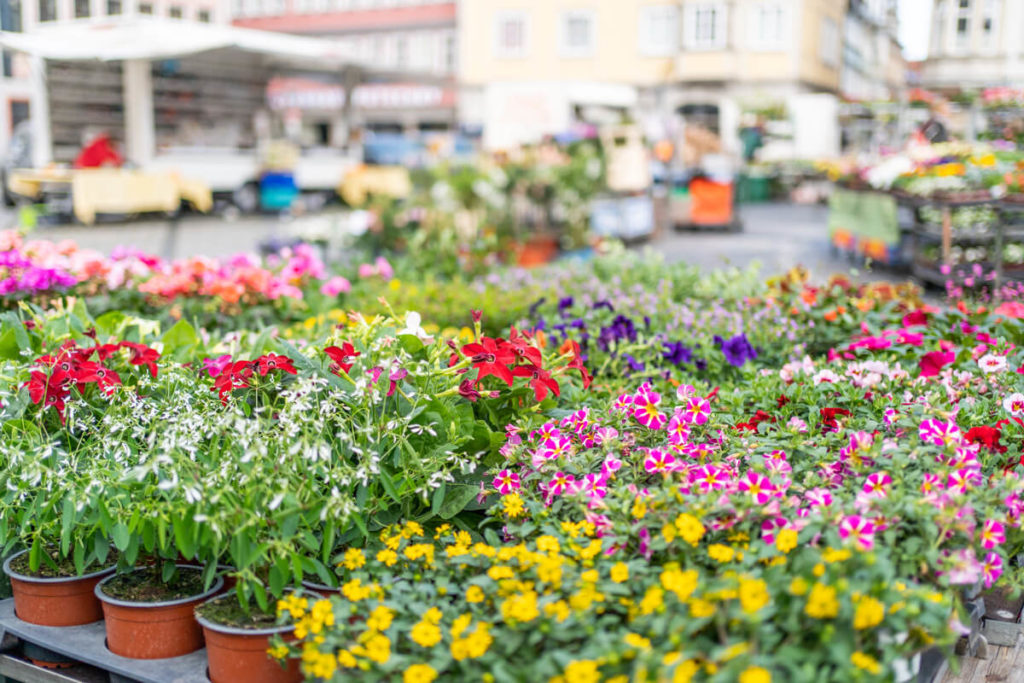
3. Steinweg & Spitalgasse in Coburg
Spitalgasse and Steinweg are well-known shopping streets in Coburg’s historic old town. Steinweg is about 500 meters long and runs from the Spitaltor to the Hotel Hahnmühle 1323. This street is one of the oldest streets in Coburg and was already used as a trade route in the Middle Ages.
Over the years, the street has developed into an important shopping and business district. Here you’ll find a variety of shops, cafés, restaurants, and bars that invite you to stroll and linger.
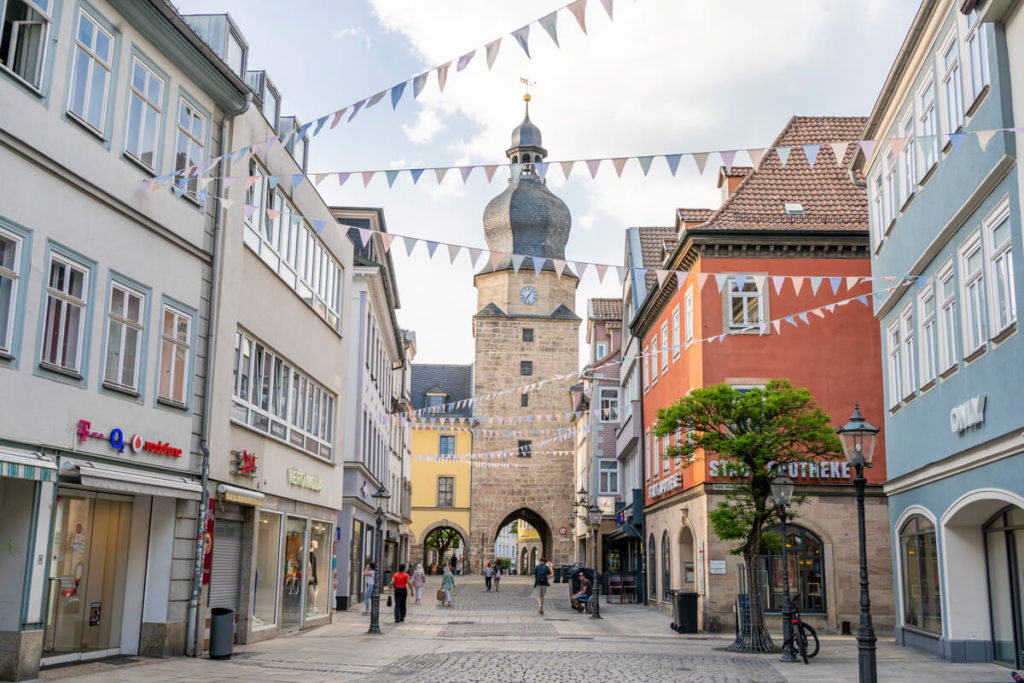
The numerous historic buildings along the street, some of which are several hundred years old, are particularly worth seeing. Many of these houses have been painstakingly restored and provide insight into the region’s history and architecture. Steinweg is also an important venue for various street festivals and events that take place here throughout the year. Nevertheless, Steinweg is not only Coburg’s party mile; vacant properties are also currently being used by workspaces, artisans, and the creative scene in the “Zwischenzeit Steinweg” project.
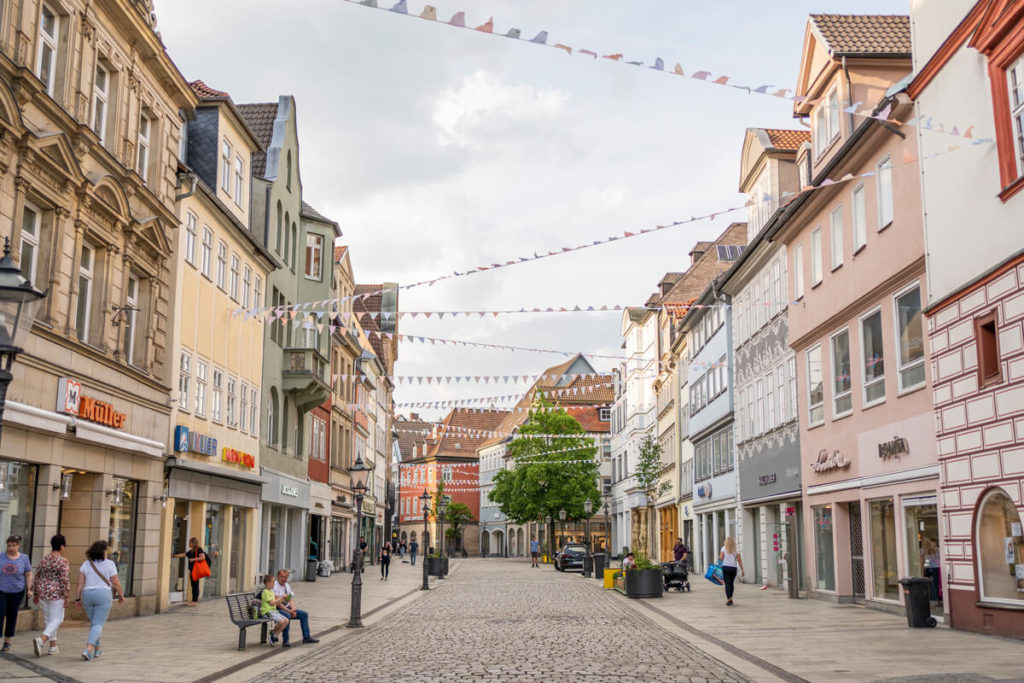
4. St. Moriz Church
Another attraction in Coburg is the St. Moriz Church, one of the oldest churches in the city. It was built in the 14th century in the Gothic style and has been expanded and rebuilt several times over the centuries.
Inside the church, you can marvel at numerous works of art and valuable objects, including the over 13-meter-high carved alabaster tomb, which is one of the most impressive Renaissance epitaphs in Germany. On request, you can even climb the Moriz Tower and enjoy the view over the city.
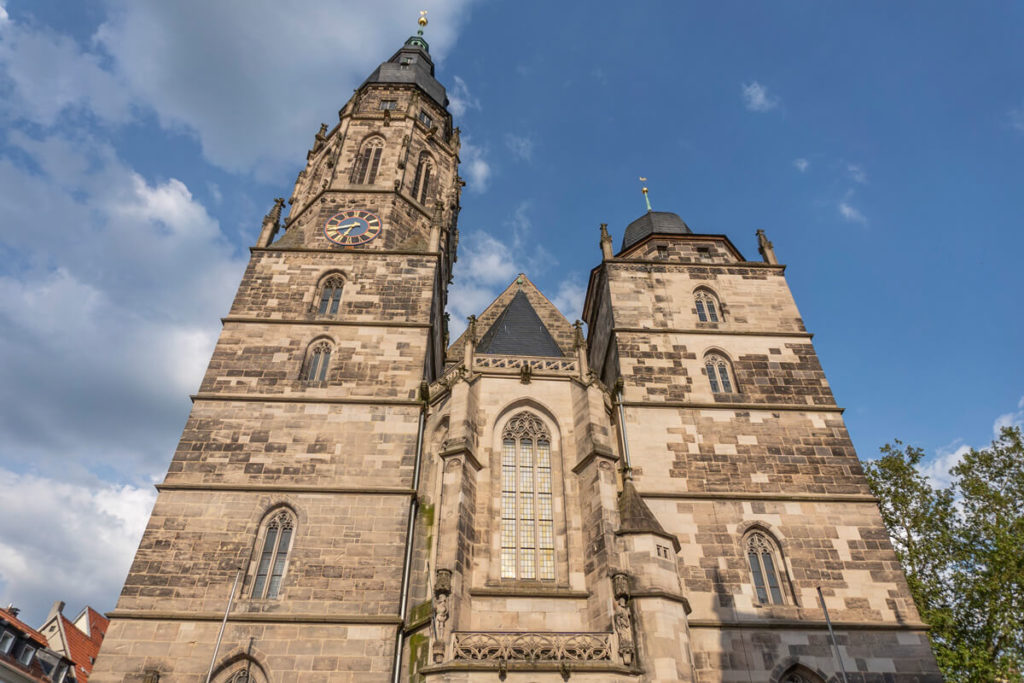
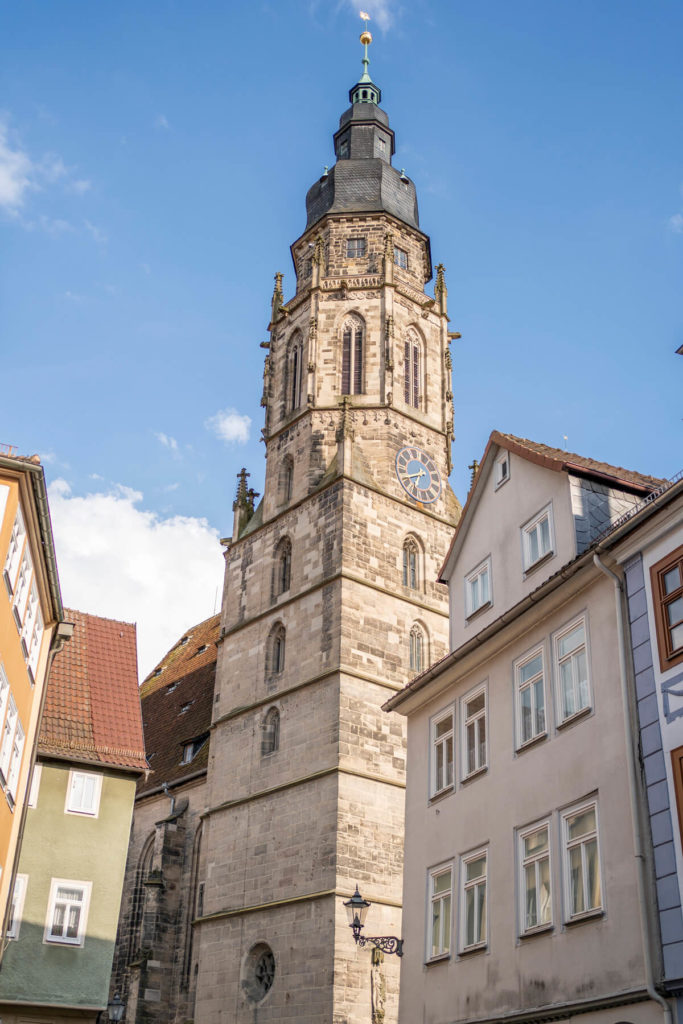
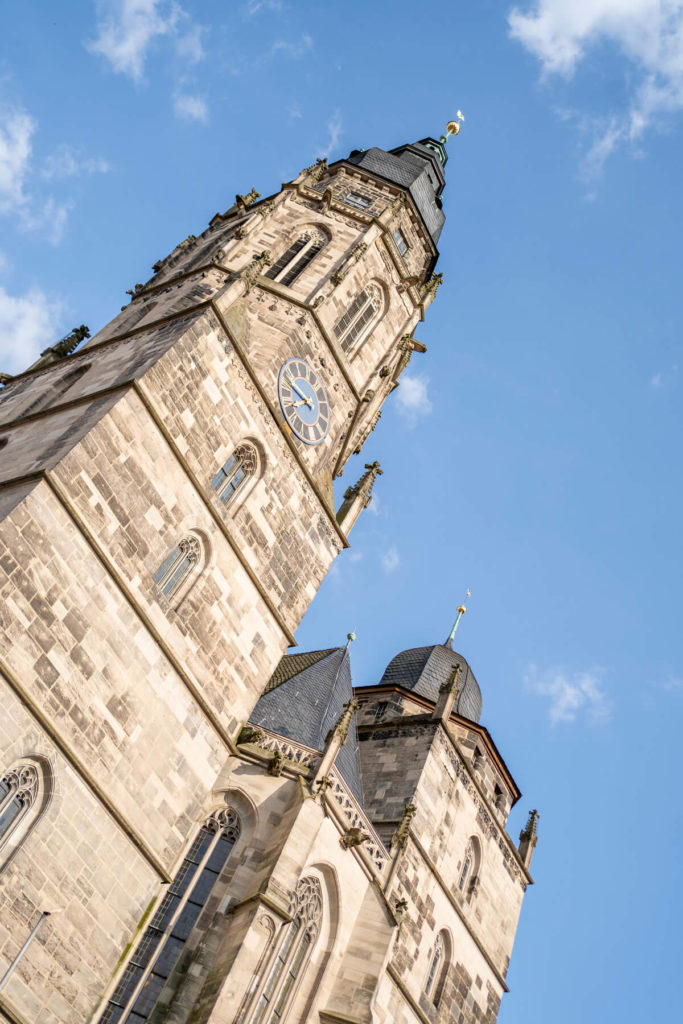
5. Stolpersteine in Coburg
Again and again, we discovered small brass memorial stones in the old town, which have been laid in Coburg since 2009. There are said to be over 100 of these “Stolpersteine” in Coburg.
The “Stolpersteine gegen das Vergessen” project was launched to commemorate the victims of National Socialism. At the same time, the aim is to send a message against intolerance, violence, and xenophobia. The memorial stones are located in front of the last places of residence and work of the respective people.
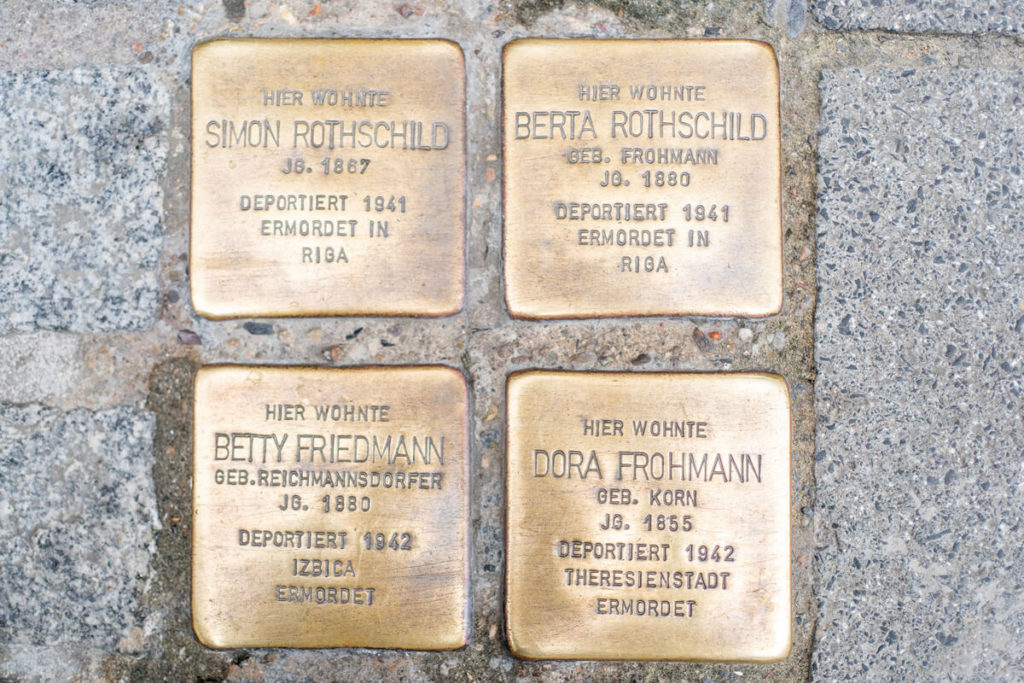
6. Monument to Gurken Alex
We walked past the monument to Gurken Alex in the middle of Herrngasse several times. Naturally, we immediately had to research what this monument was all about. Alexander Otto (1884–1960) was a true Coburg character, which is why this drinking fountain with a statue was built in his honor.
He sold mainly cucumbers, which he affectionately called “Kümmerlinge,” out of buckets. This was how he laboriously earned a few euros to support himself and care for his mother, who needed care. This statue reminded us of our “Spielmann-Grandpa” (Michael Tryanowski), who was a true personality in Rostock and also received a monument in the heart of the city.
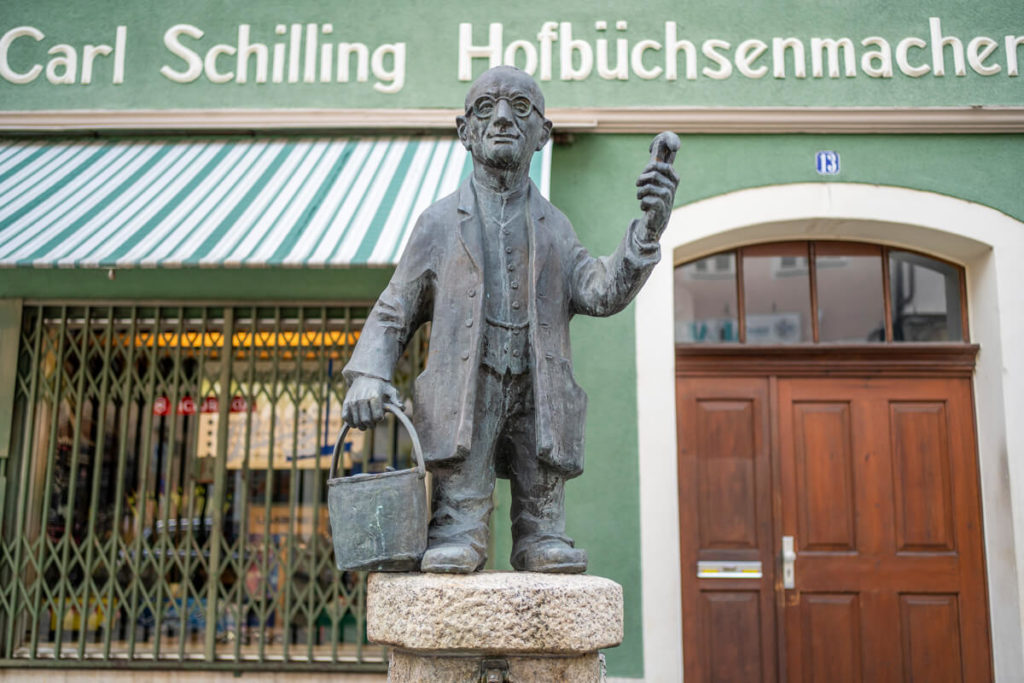
7. The State Theater
The State Theater Coburg, which reopened in 1840 in the neoclassical style, has a long tradition as a cultural center of the region. The program is very diverse and offers something for every taste, whether classical plays, operas and operettas, musicals, or ballets.
Currently, the State Theater can only be viewed from the outside because it is undergoing extensive renovations. The new GLOBE COBURG is currently serving as the venue. ☞ Click here for the program.
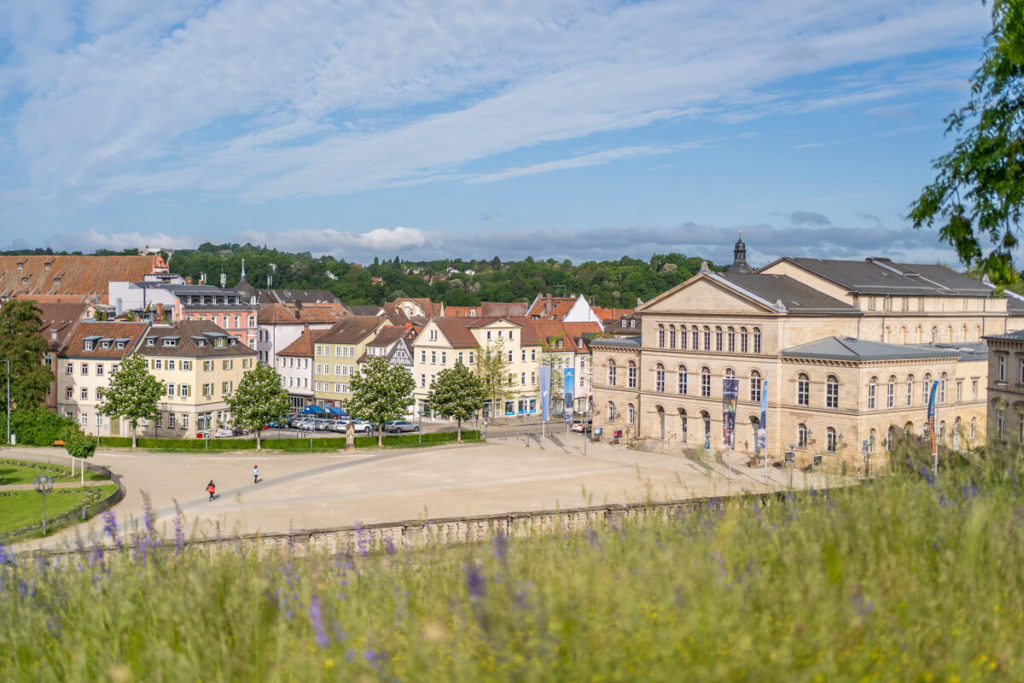
8. Ehrenburg Castle
Not far from the Landestheater is the historic Ehrenburg Castle. The complex is one of the city’s most famous landmarks. The history of this impressive building in the Renaissance and Baroque styles dates back to the 12th century.
Inside, you can take a guided tour of 25 magnificent rooms with opulent tapestries, paintings, and furniture, giving you an insight into life at the court of the Dukes of Saxe-Coburg and Gotha.
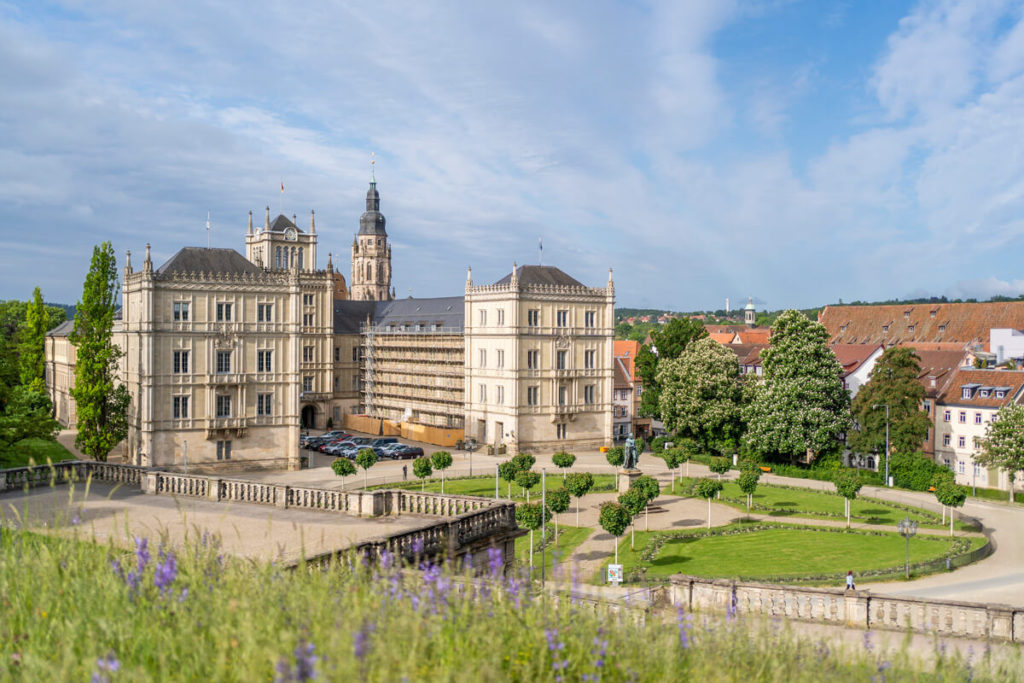
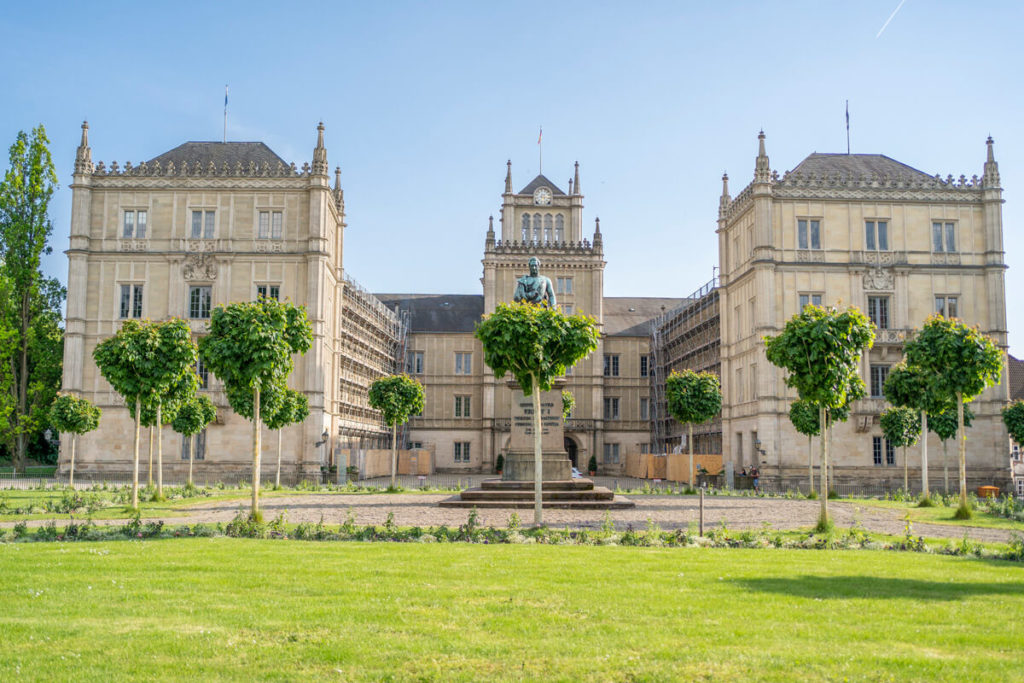
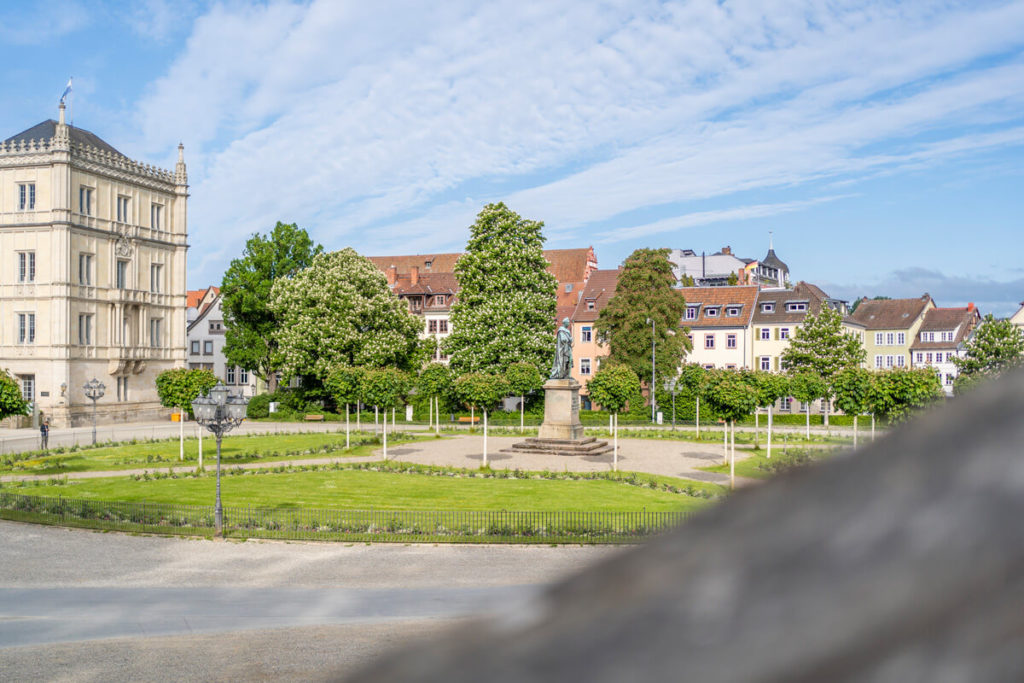
We always find it fascinating to stroll through such rooms. And we ask ourselves the same question again and again: “What must it have been like here back then?” One moment we were standing in the bedroom that Queen Victoria used during her visits to Coburg and the next moment in the dressing room.
Incidentally, she was also the great-great-grandmother of Queen Elizabeth II. During the tour we learned more about the history of the castle and the various personalities who lived here. The rooms, paintings, and furniture are very well preserved and reflect the era of the dukes very well.
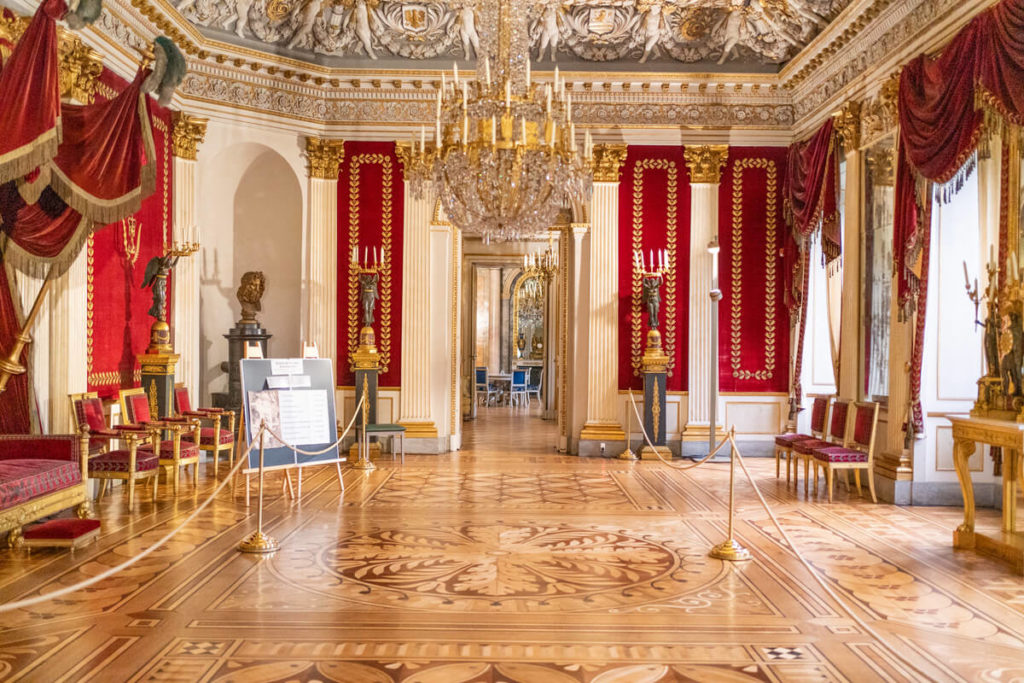
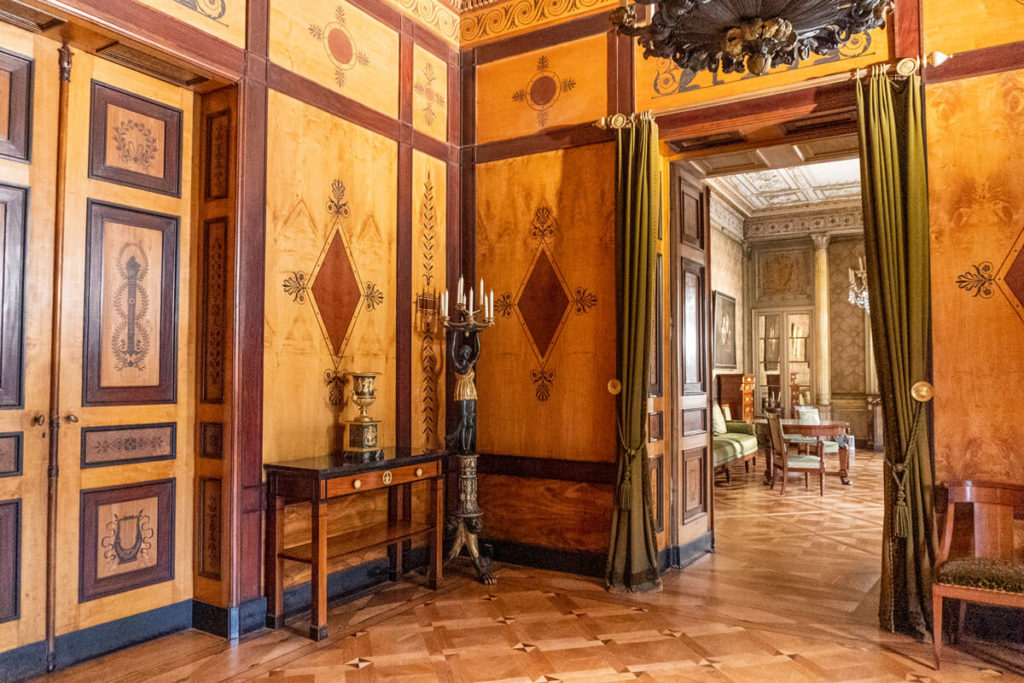
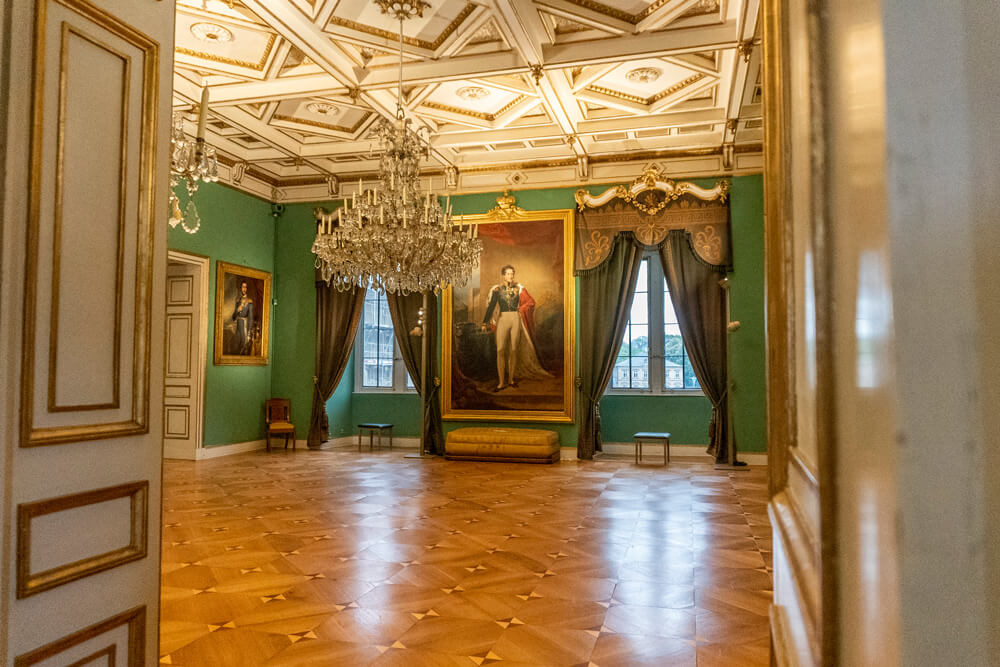
Coburg Sights – Guided Tour of the Castle
Guided tours take place every hour on the hour. Ehrenburg Castle is open from April to October 3rd from 9am to 6pm. The last tour is at 5pm. From October 4th to the end of March, Ehrenburg Castle is open from 10am to 4pm.
During these months, the last tour takes place at 3pm. Ehrenburg Castle is closed on Mondays (except January 6th, Easter Monday, and Whit Monday). The tour costs €5 (regular) and €4 (concessions). You can find more information here: ☞ Ehrenburg Castle.
9. Veste Coburg and Court Gardens
Veste Coburg is a historic castle complex that towers high above the city of Coburg. This castle complex was built in the late Middle Ages and has undergone numerous expansions and renovations over the centuries. Today, Veste Coburg is one of the region’s most famous sights and houses, among other things, an extensive museum.
Incidentally, Martin Luther lived here for almost half a year in 1530 because he was under imperial ban and excommunication, and therefore considered it too dangerous to continue his journey through Catholic territory to Augsburg. He used this time to translate parts of the Bible into German during his stay. These days, you can even get married in the Luther Chapel.
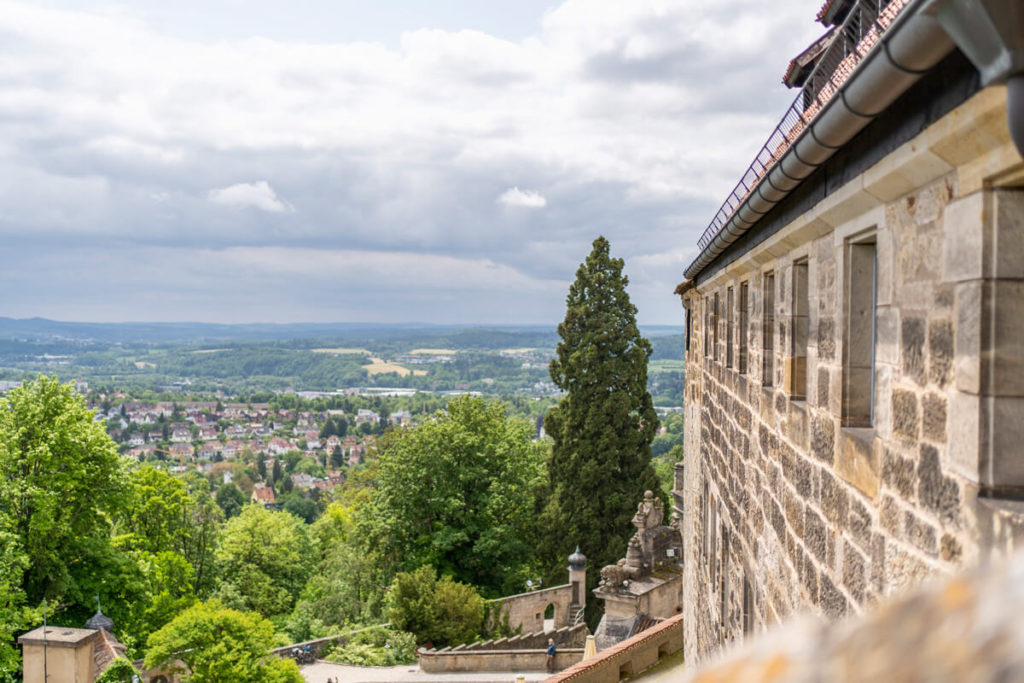
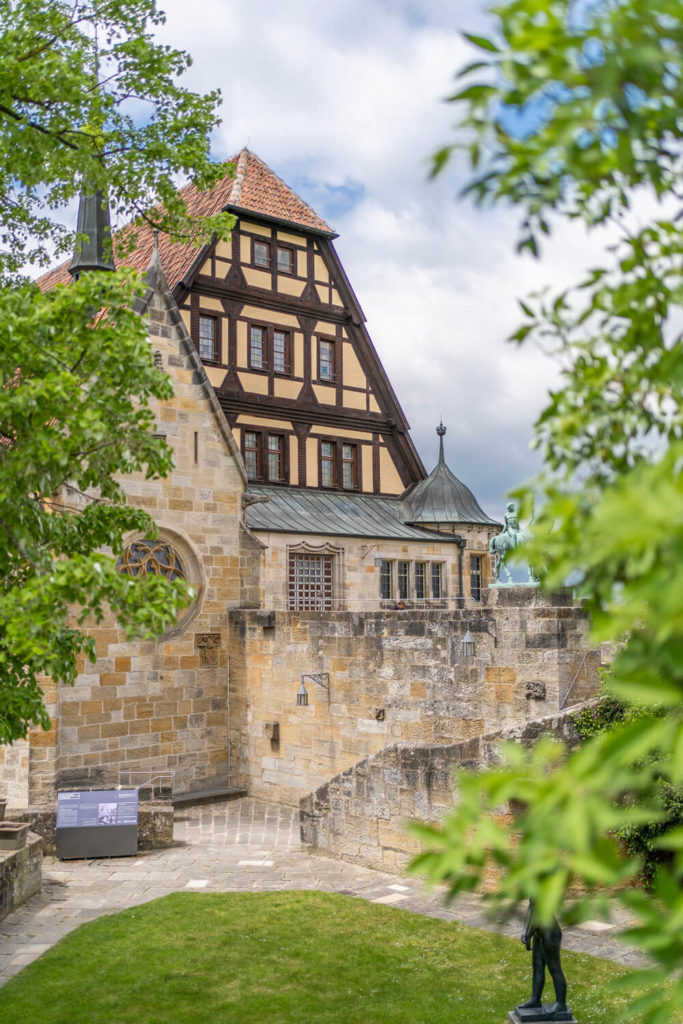
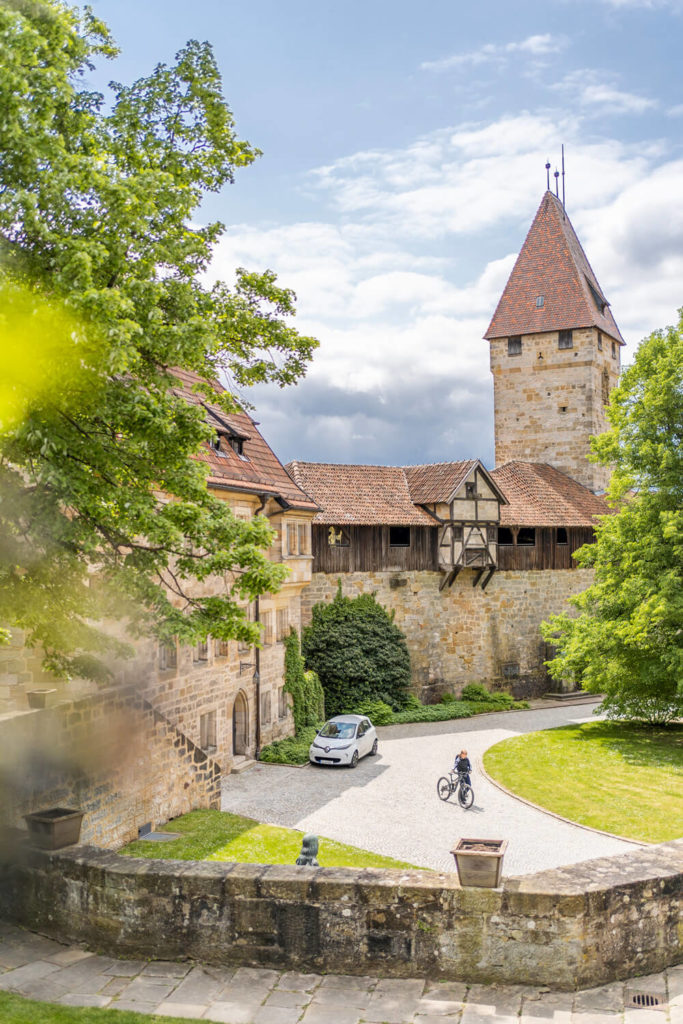
The castle later served as the residence of the Dukes of Saxe-Coburg and Gotha, including Prince Albert, husband of Queen Victoria of Great Britain. You can reach the castle on foot from the Schlossplatz via the beautifully landscaped Court Garden, by city bus (line 5), or by the Veste-Express (operates from April to generally early November, daily except Mondays).
From the complex, you also have a breathtaking view of the city and the surrounding area. Take plenty of time to marvel at the extensive exhibition inside the castle. The collections are among the most important art and cultural history collections in Germany.
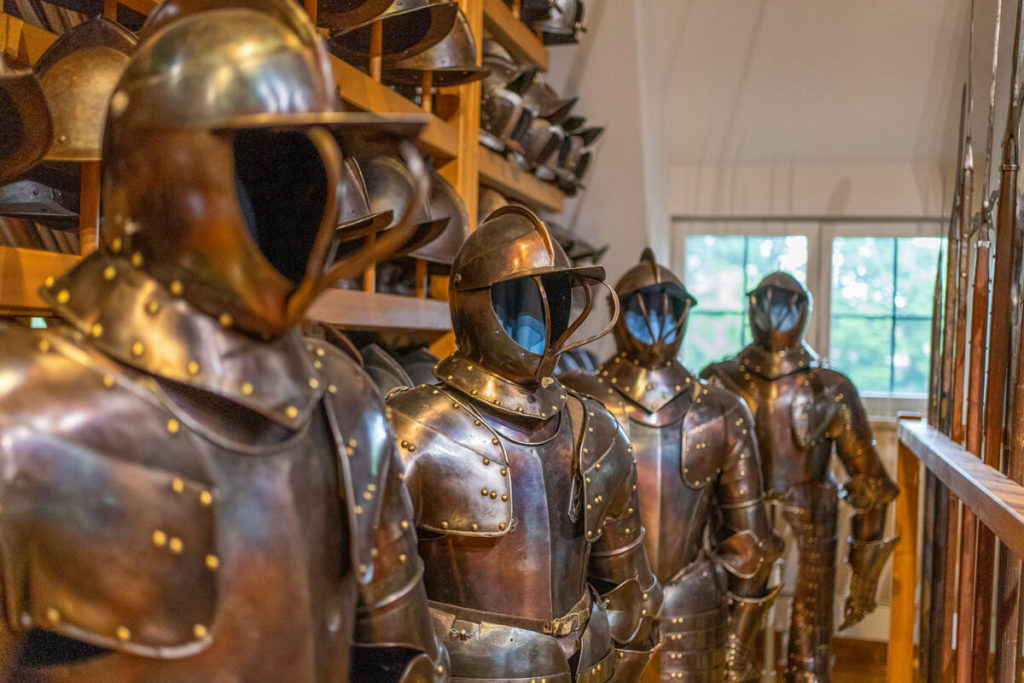
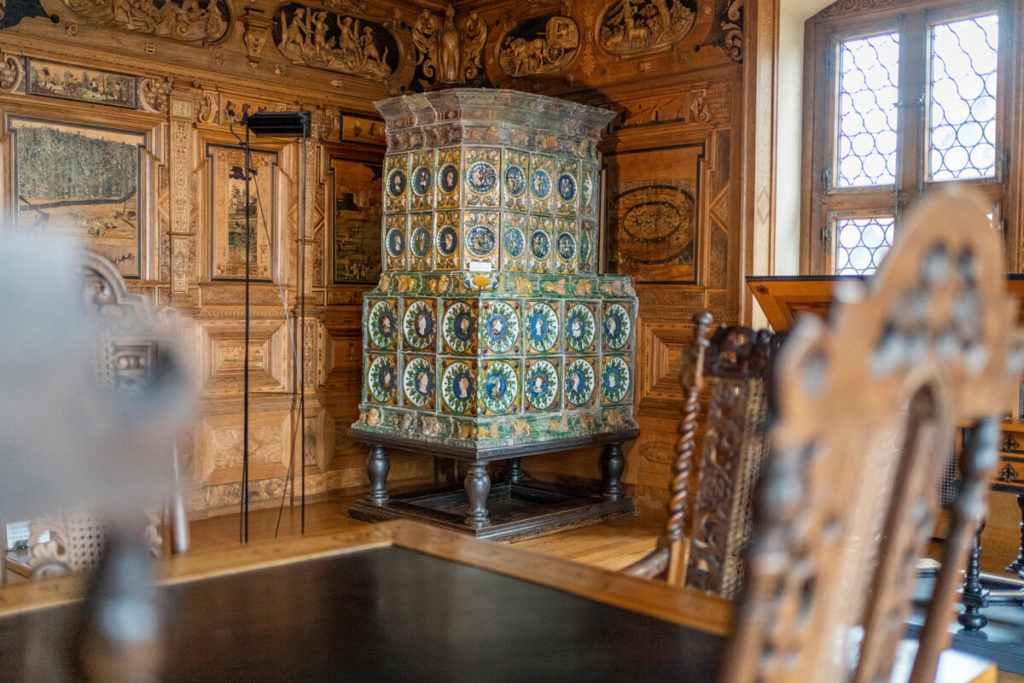

Information about Veste Coburg
The castle complex is open daily from 9:30 a.m. to 5 p.m. from April 1 to November 5. From November 7 to March 22, Veste Coburg is open every Tuesday to Sunday from 1 p.m. to 4 p.m. Admission to the exhibitions costs €9 for adults (children, young people, and seniors receive a reduced rate).
You can use an audio guide for the various exhibition rooms (rental fee €2). Themed tours are also offered on certain dates.
10. Break in the Rose Garden
If you need a break from sightseeing, we recommend a visit to the Rose Garden, which is located near the Ketschen Gate. The garden is known for its beautiful rose beds (more than 60,000 blossoms and 110 rose varieties) in a variety of colors and offers a picturesque backdrop for strolls, picnics, and relaxation.
Cultural events and outdoor concerts also take place here during the summer months. In the Palm House, you can stroll among orchids, palm trees, cacti, bamboo varieties, and exotic birds (free admission).
11. Guided Tours of Coburg
Coburg offers various city tours offered by experienced and qualified guides. These tours are a great way to learn about the city’s history and culture and discover interesting places and sights.
For example, there are classic city tours and costume tours. We went with the Coburg market woman and learned more about the city’s history. Click here for the tours.
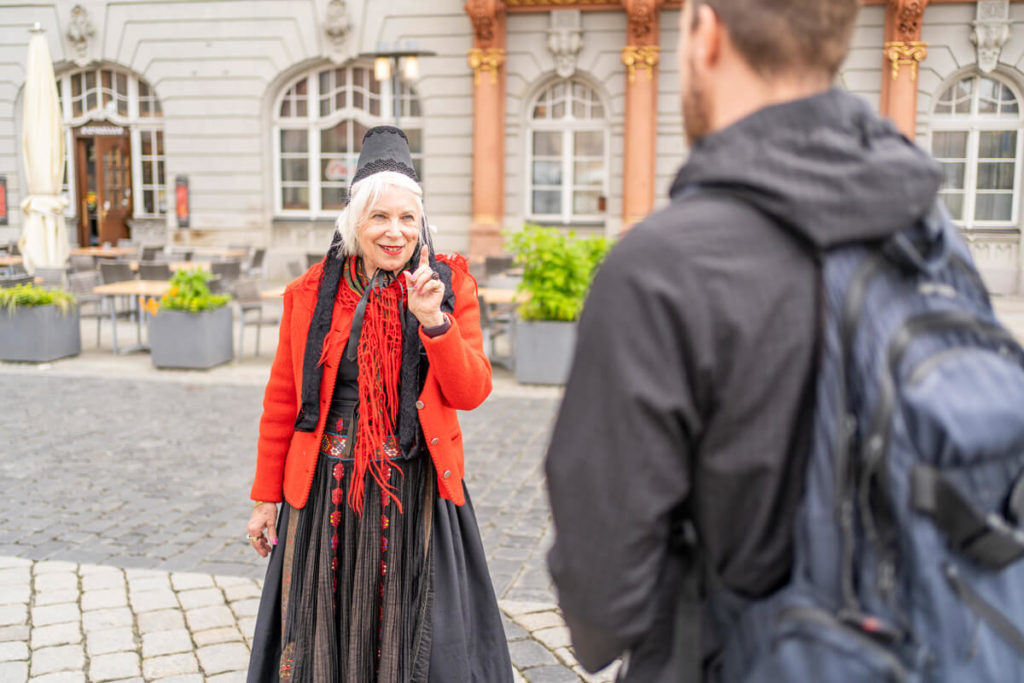
We also think the so-called “audio walks” are really cool, where you explore the city on your own using your smartphone. One of the most popular audio walks in Coburg is “Historic City Center.” This walk leads through Coburg’s historic old town and offers insights into the city’s history and culture. More about it here: Audio Walks through Coburg.
12. Callenberg Castle
Callenberg Castle is an imposing castle located on a hill about 5 kilometers north of the city of Coburg. It is an important cultural monument in the region and a popular tourist destination. The castle served as a summer residence and, most recently, as the main residence of the ducal house of Saxe-Coburg and Gotha.
The interior of the castle is extremely impressive. This precious collection of works of art, as well as the 400-year-old castle chapel, can be visited, currently (April to October) Thursday to Sunday from 11 a.m. to 5 p.m. (November to December, Thursday to Sunday from 1 p.m. to 4 p.m., closed January to March). More information here: Callenberg Castle.
Restaurants & Cafés
Coburg boasts numerous great restaurants, cafés, and bars. In the following list, you’ll find our recommendations for you to try on your next trip.
Münchner Hofbräu: If you’re in the mood for hearty, traditional cuisine, you should stop by the Münchner Hofbräu. Here you can find Sauerbraten, schnitzel, Kaiserschmarrn, Kasspatzn (cheese dumplings), and delicious fish dishes. We loved it!
Sonderbar: We immediately felt at home in this cool, special bar in the heart of the city center. We enjoyed delicious drinks and freshly prepared dishes in a relaxed atmosphere. Here you can find vegan burgers (Aladdin), delicious salads, soups, baguettes, tarte flambée, and much more.
Brauhaus zu Coburg: You can also get authentic Franconian-Bavarian cuisine at the Brauhaus zu Coburg. The menu includes fresh pretzels, the Wirthausbrettl (a typical Bavarian dish), regional roasts, Kasspatzn (cheese dumplings), traditional knuckles, and, of course, the original Coburg dumplings, also called “Rutscher,” a special version of the potato dumpling.
Café Schubart: You can enjoy a wonderful, extensive breakfast at the Schubart coffee roastery on Mohrenstraße. Not only do you get freshly roasted coffee here, but you’ll also get delicious baked goods straight from the bakery. The café itself is very stylishly decorated and exudes a relaxed and cool atmosphere (Café Feiler is also recommended for breakfast).
Feinbäckerei Feyler: Be sure to try the “Coburger Schmätzchen,” one of Coburg’s trademarks. This sweet, spicy pastry has been produced by the bakery since the late 19th century. The finest Elisenlebkuchen (gingerbread) has also been lovingly handcrafted here for over 130 years.
Café Sorgenfrei: Fancy a fresh waffle with ice cream, homemade pasta, tarte flambée, wraps, colorful leaf salads, or a veggie burger? Then off to Café Sorgenfrei, which has a small, cozy courtyard.
Moehre 27: You can get really good coffee at Café Moehre 27 on Mohrenstraße. The menu also includes healthy bowls, sandwiches, and tramezzini. We especially liked the inviting ambiance and style of the café.
Picknick Coffee & Snacks: The “Picknick Coffee & Snacks” café is located directly in front of St. Moriz Church. We took a relaxing coffee break there. In a cozy living room atmosphere, you can also get salads, bowls, and delicious Thai curries.
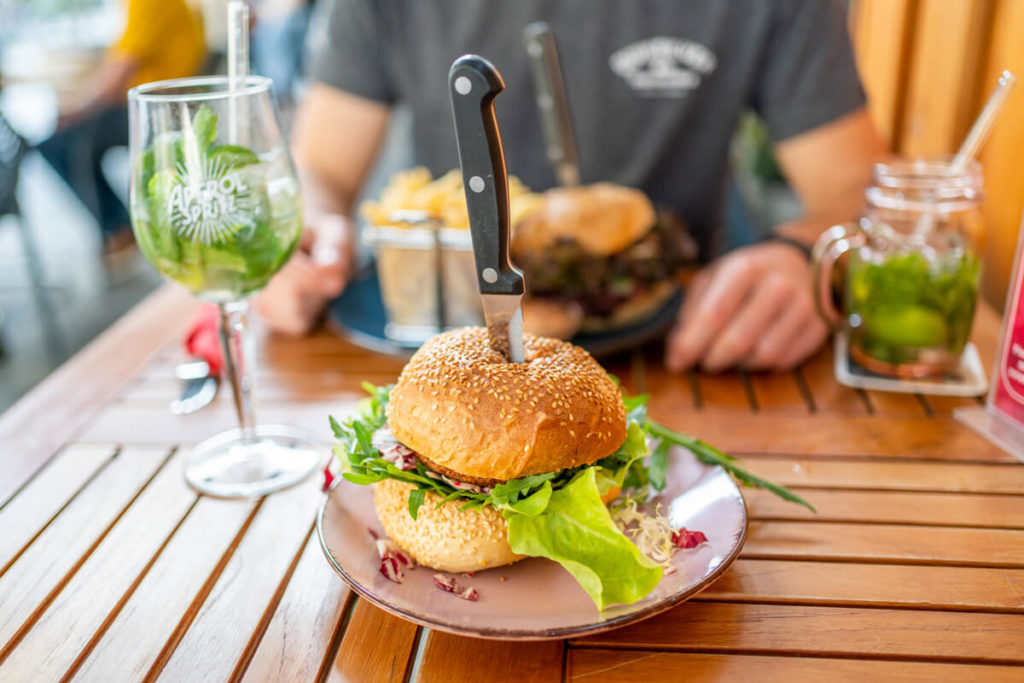
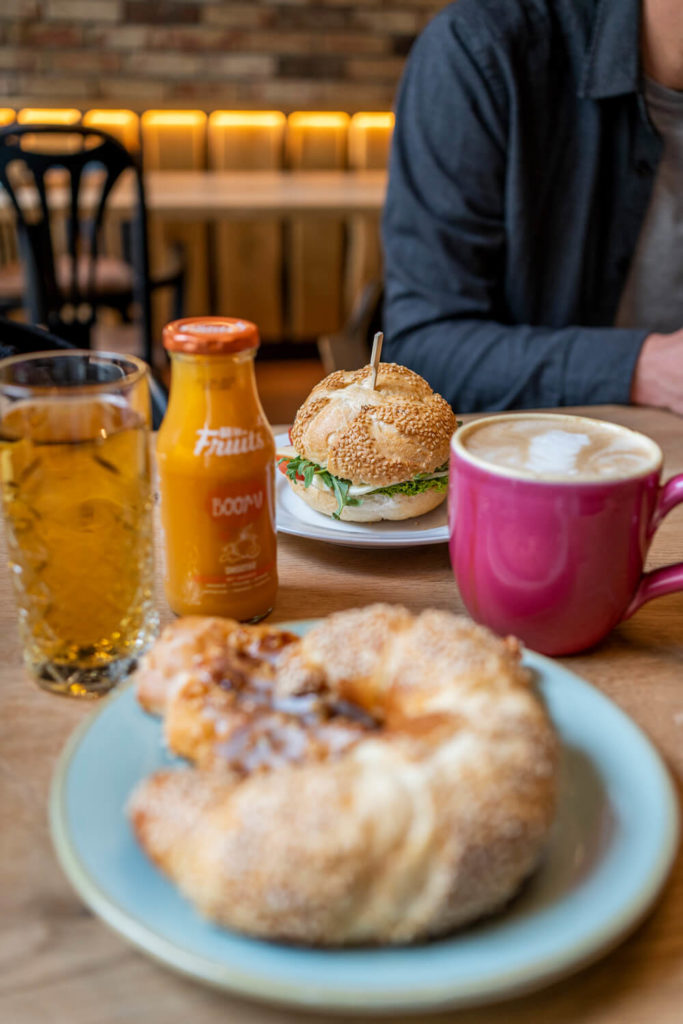
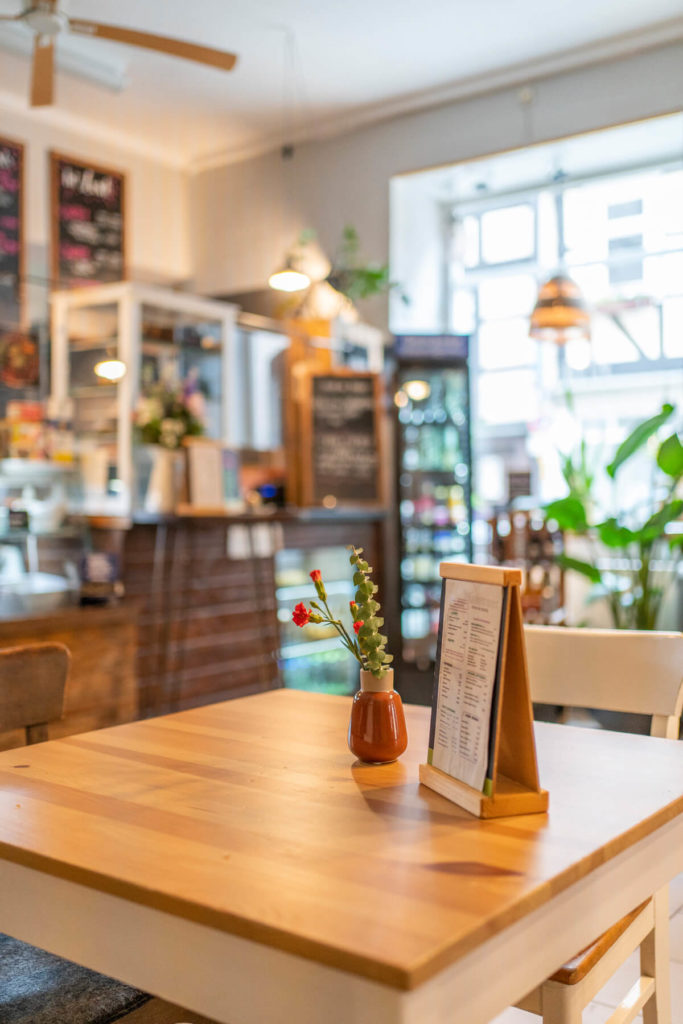
Events in the Vestestadt
Coburg hosts many different events, festivals, and activities throughout the year. Here are some of the most well-known and popular:
International Samba Festival Coburg: The largest samba festival outside of Brazil takes place every July in Coburg and attracts visitors from all over the world. Over 200 groups with around 4,000 dancers and musicians provide a colorful and rhythmic program. More about this here.
Design Days in Coburg: The Design Days in Coburg are an annual event dedicated to the promotion and presentation of design and creativity in various fields. The Design Days offer an extensive program of workshops, lectures, exhibitions, guided tours, and panel discussions. More about this here.
Schlossplatzfest: The popular Schlossplatzfest takes place every July in Coburg. Then, for 5 days, the square is transformed into an exciting mix of culinary delights, show acts, and the best entertainment on balmy summer evenings. More about this here.
Christmas Market: The Coburg Christmas Market on the market square and in the surrounding streets is one of the most beautiful in Bavaria and attracts numerous visitors every year. More about this here.
Our Hotel in Coburg
During our time in Coburg, we stayed at the romantic Hotel Hahnmühle 1323*, which is the second oldest, listed half-timbered building in the fortress town of Coburg. The hotel was rebuilt in 1323, which is why these numbers are also reflected in the name.
While grain was once milled here, today guests can stay in one of the 19 stylishly furnished rooms. You can still discover many historical details, such as the spiral staircase, the sandstone masonry, remnants of the late medieval outer city wall, and even the traditional wooden furniture.
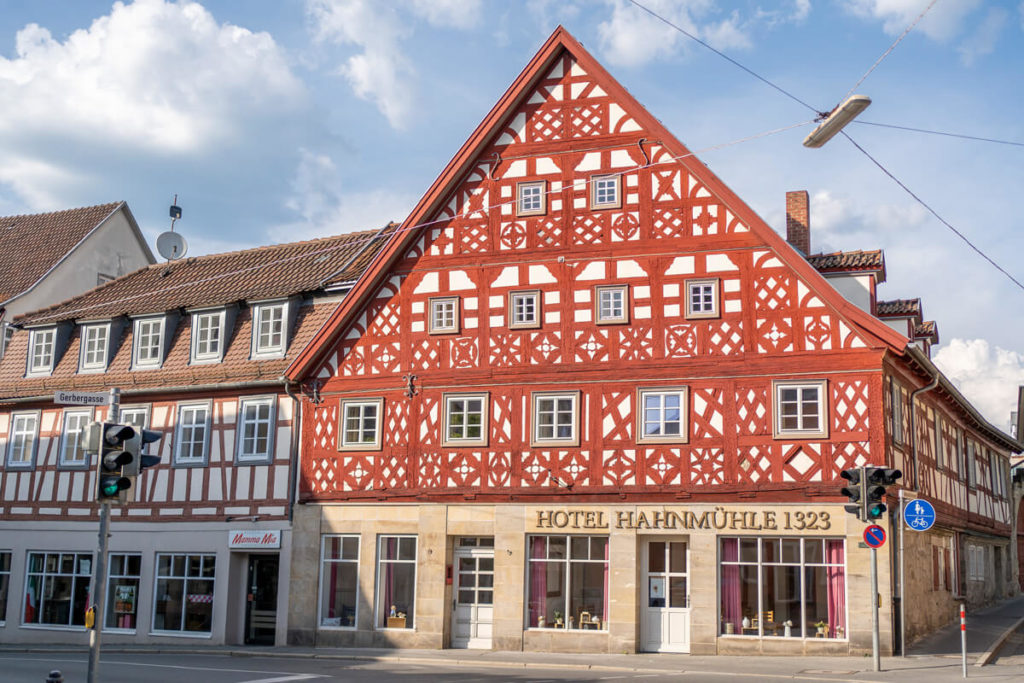

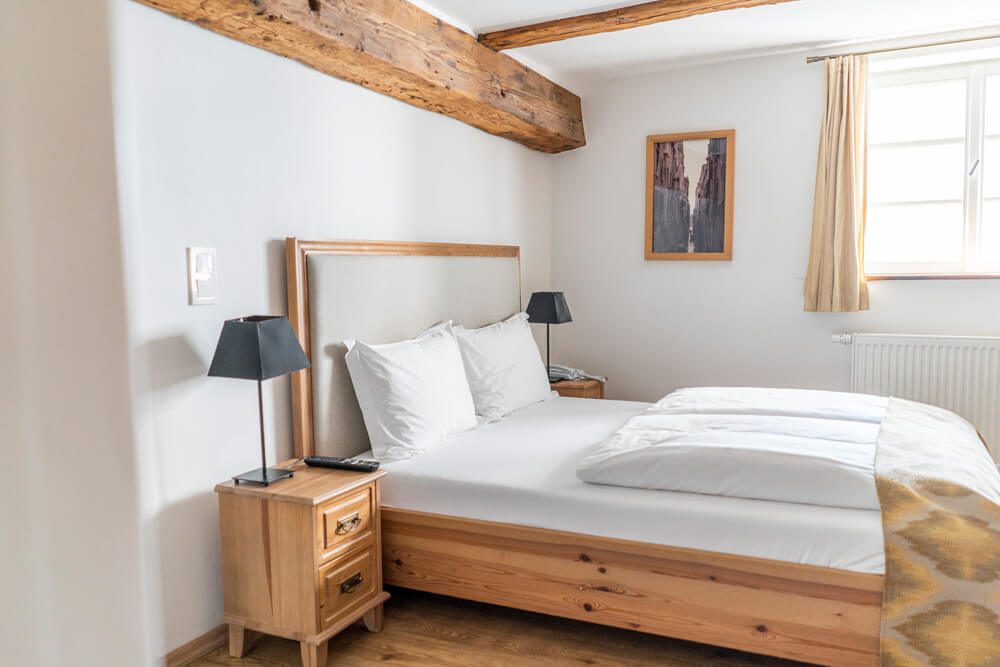
Our cozy double room had a large double bed, a large wardrobe, a seating area, a bathroom with shower, a desk, TV, and a Nespresso coffee machine. The hotel is only a 10-minute walk from the market square, making it ideal for a city trip.
Restaurants, bakeries, cafés, and shops are also in the immediate vicinity. Breakfast is not currently offered, so it’s best to stop off at one of the many great cafés in the morning. Book a room here*.
Travel tips for Coburg
By car
Coburg is located on the A73, which connects Nuremberg with Suhl. The city can also be reached via the B4 and B303 federal highways. From Munich, it takes just 2.5 hours by car to Coburg, and from Nuremberg, it only takes one hour. If you’re coming from Berlin, it’s best to take the A9 and B173 (approx. 4.5 hours). From Hamburg, take the A7 and A71 to Coburg (approx. 5.5 hours).
Distances to Coburg:
- Hamburg: 515 km
- Cologne: 410 km
- Berlin: 386 km
- Munich: 280 km
- Dresden: 260 km
- Stuttgart: 255 km
- Nuremberg: 110 km
By train
Coburg is connected to the regional and national rail network. There are regular connections to and from Munich, Berlin, Nuremberg, Würzburg, and Erfurt. Coburg’s train station is located in the city center and is easily accessible on foot or by public transport. As always, we traveled comfortably by train. Buy train tickets here*.
Inside Coburg
Within the city itself, you can easily travel by public bus. There is also a well-developed network of bike paths that crisscross the city. We easily explored Coburg on foot. To the buses.
Our Franconia Podcast
Our Franconia tour is now available for your ears. In our first episode, we talk about Coburg, Bamberg, Kulmbach, Bayreuth, and Nuremberg. Check it out!
Click the button below to load the content from www.podbean.com.
Load content